To install a buzzer door lock, follow these steps: 1) Remove the existing lock from the door. 2) Install the buzzer lock in its place, ensuring it is securely attached.
Introducing a buzzer door lock to your property can greatly enhance security and convenience. With this technology, you can control access to your premises and monitor entry remotely. In this guide, we will walk you through the simple process of installing a buzzer door lock.
By following these instructions, you can have a functional and effective security system in no time. So, let’s get started!
Factors To Consider When Selecting A Buzzer Door Lock
Factors to Consider when Selecting a Buzzer Door Lock
When it comes to securing your home or office, a buzzer door lock can be an excellent choice. It provides convenience and control over who enters your premises. However, selecting the right buzzer door lock requires careful consideration. Here are some factors you should keep in mind:
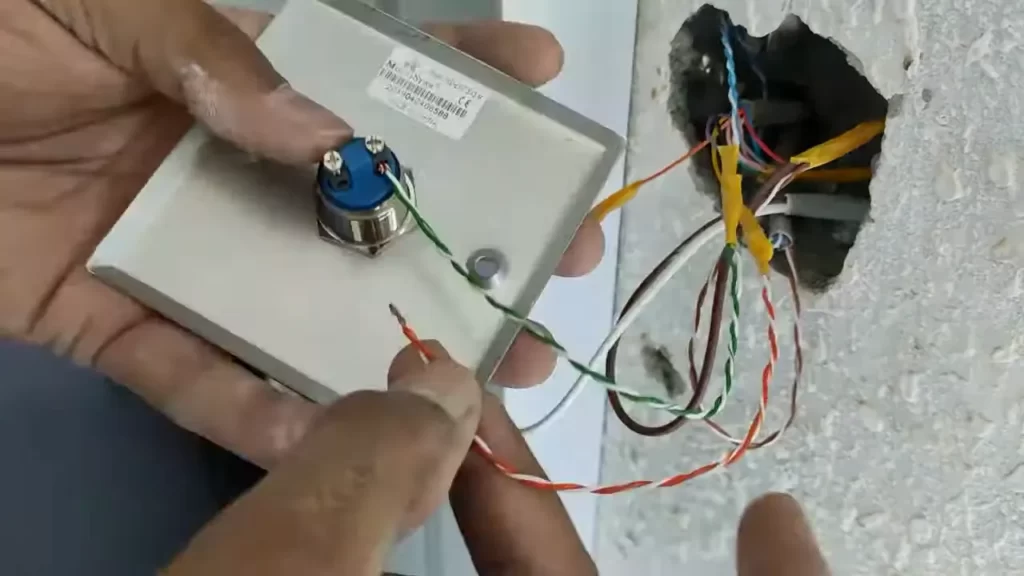
Types of buzzer door locks
Before installing a buzzer door lock, it is essential to understand the different types available. The two most common types are electric strike locks and magnetic locks.
Electric strike locks use an electric current to release the latch, allowing the door to open. These locks are suitable for wooden doors and are often used in residential buildings.
Magnetic locks, on the other hand, use electromagnets to keep the door locked. These locks are ideal for high-security applications and provide more strength than electric strike locks.
Compatibility with existing door hardware
When choosing a buzzer door lock, it is crucial to consider its compatibility with your existing door hardware. This includes the type of door, its material, and the alignment of the lock mechanism.
An electrical strike lock may be more suitable for doors with a latch mechanism, while a magnetic lock can work well with doors made of different materials, such as glass or metal.
Security features
Safety should be a top priority when selecting a buzzer door lock. Look for locks that offer advanced security features, such as encrypted communication, tamper detection, and anti-tailgating technology. Enhanced security features will provide an additional layer of protection against unauthorized entry.
Ease of installation and maintenance
Installing a buzzer door lock should be a smooth process, especially if you are doing it yourself. Look for locks that come with clear installation instructions and intuitive wiring diagrams. This will ensure that the installation is hassle-free and straightforward.
Similarly, maintenance should also be considered. Opt for locks that are easy to maintain, with readily available replacement parts and a user-friendly interface for troubleshooting.
By considering these factors when selecting a buzzer door lock, you can ensure that you choose the right lock for your security needs. Keep in mind the type of lock, compatibility with existing hardware, security features, and ease of installation and maintenance. This will help you make an informed decision and provide peace of mind knowing that your premises are secure.
Gathering The Necessary Tools And Materials
Before you can install a buzzer door lock, you need to gather all the necessary tools and materials. Having everything ready in advance will make the installation process go much more smoothly. Below, you will find a list of the required tools and the materials needed for the installation.
List of required tools
Here is a list of tools you will need for the installation:
- Screwdriver set (Phillips and flathead)
- Drill
- Hammer
- Measuring tape
- Wire stripper
- Wire cutter
- Pliers
- Level
- Pencil
- Masking tape
Materials needed for installation
To successfully install a buzzer door lock, you will also need the following materials:
- Buzzer door lock kit
- Electric drill bits
- Screws
- Anchors
- Door strike plate
- Wires
- Connectors
- Electrical tape
- Mounting hardware
Make sure you have all the tools and materials listed above before you begin the installation process. Having everything on hand will help ensure that you can complete the installation without any interruptions or delays.
Assessing The Existing Door And Lock Setup
Before installing a buzzer door lock, it is crucial to assess the existing door and lock setup. This initial step will help determine the compatibility of the new system and identify any necessary modifications or upgrades. Here’s a comprehensive guide to assist you in evaluating the condition of the door as well as the current lock system.
Checking the door condition
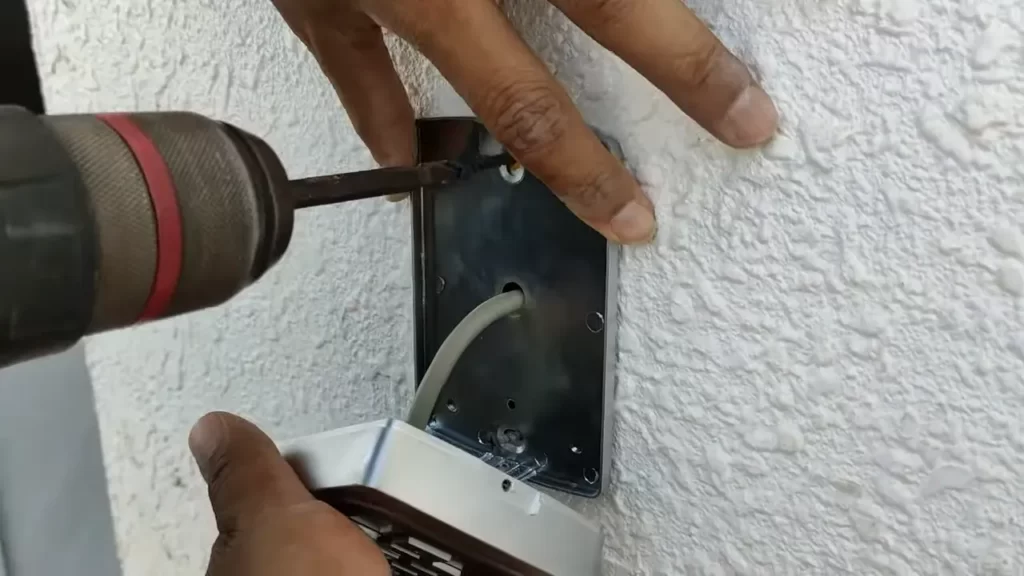
Firstly, carefully examine the overall condition of your door. Look for signs of wear and tear, cracks, and any other damages that may affect the functionality and security of the installation. It’s important to ensure that the door is robust and in good shape to support the weight and operation of the buzzer door lock.
If you notice any significant flaws or issues with the door, it is advisable to address them before proceeding with the installation. This may involve repairing any damages, reinforcing weak areas, or even considering replacing the door entirely.
Evaluating the current lock system
The next step in assessing the existing setup is to evaluate the current lock system. Determine whether you have a compatible lock that can be easily integrated with a buzzer door lock. Consider factors such as the type of lock, its condition, and its compatibility with the new system.
| Lock Type | Compatible with Buzzer Door Lock? |
|---|---|
| Mechanical lock | Yes |
| Electronic keypad lock | May require additional adjustments or replacement |
| Smart lock | May require additional adjustments or replacement |
| Deadbolt lock | Yes |
Keep in mind that different lock manufacturers may have different compatibility requirements, so it’s essential to consult the product manuals or seek professional assistance, if needed.
Preparing the door for installation
Once you have assessed the door condition and evaluated the current lock system, it’s time to prepare the door for the buzzer door lock installation. Follow these steps to ensure a smooth and hassle-free process:
- Remove any existing hardware, such as handle sets or latch mechanisms, that may obstruct the installation or interfere with the new lock system.
- Clean the door surface thoroughly to remove any dirt, dust, or debris that might affect the effectiveness of the adhesive or mounting process.
- Measure and mark the precise location where the buzzer door lock will be installed, ensuring it aligns with the existing door frame and handle configuration.
- Double-check the measurements and markings to ensure accuracy before proceeding to attach the lock system.
By properly assessing the existing door and lock setup, you can address any potential issues and create a solid foundation for the installation of a buzzer door lock. Taking these necessary steps will not only enhance security but also ensure the longevity and functionality of the new system.
Removing The Existing Lock
Step-by-step guide to removing the old lock
When it’s time to upgrade your home security system, installing a buzzer door lock can be a smart and convenient choice. But, before you can install the new lock, you’ll need to remove the old one. In this step-by-step guide, we’ll walk you through the process of removing your existing lock.
- Prepare your tools: Before you begin, gather the necessary tools for the job. You’ll typically need a screwdriver, pliers, and a hammer to remove the old lock.
- Assess the lock: Take a close look at the existing lock to understand its components and how it functions. This will help you identify any potential complications or obstacles that you may encounter during the removal process.
- Remove the screws: Using a screwdriver, locate and remove the screws that are securing the lock to the door. These screws are typically found on the interior side of the door.
- Disconnect the latch: Once the screws are removed, you’ll need to disconnect the latch from the door frame. Use pliers or a similar tool to release the latch mechanism and free it from the strike plate.
- Take out the deadbolt: If your lock has a deadbolt, remove it by unscrewing the bolts that hold it in place. Depending on the model, you may need to rotate the lock cylinder with a key to align the bolt holes for removal.
- Detach the strike plate: The strike plate is the metal plate that is installed on the door frame to secure the latch. Using a screwdriver, remove the screws that are holding the strike plate in place and gently pry it away from the frame.
By following these step-by-step instructions, you can successfully remove the old lock and prepare your door for the installation of a buzzer door lock. Keep in mind that each lock may vary in terms of its components and installation process, so it’s always best to consult the manufacturer’s instructions for specific guidance.
Wiring And Connecting The Buzzer Door Lock
A buzzer door lock is a valuable security addition to your home or office. It allows you to control access by buzzing in authorized individuals while keeping unwanted visitors out. The installation process involves understanding the wiring diagram, connecting the buzzer door lock to the power source and control panel, and ensuring proper electrical connections. Let’s explore each of these steps in detail.
Understanding the Wiring Diagram
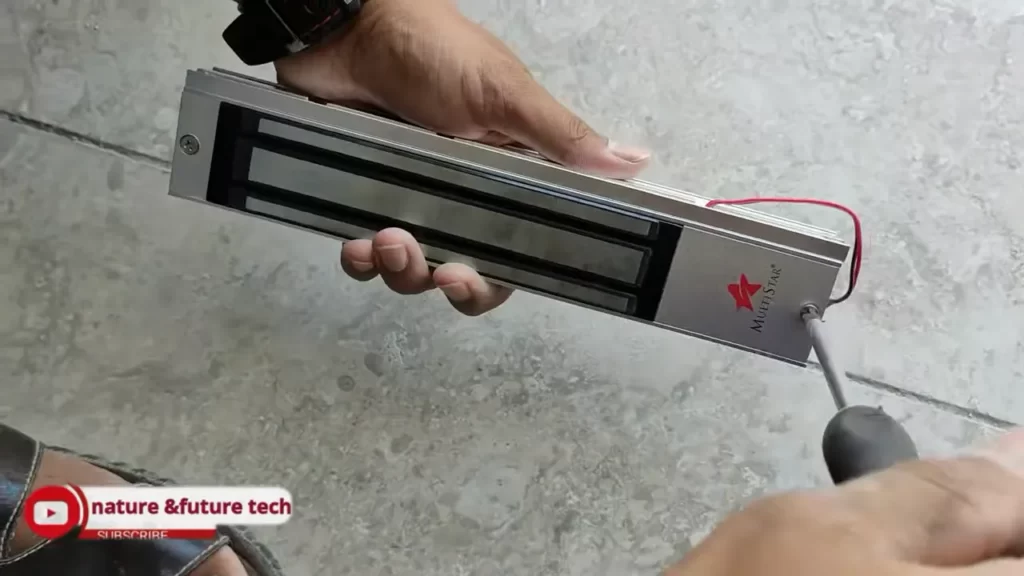
Before you begin the installation process, it is crucial to familiarize yourself with the wiring diagram of the buzzer door lock. The wiring diagram illustrates how the various components of the lock are connected, including the power source, control panel, and the lock itself. It provides a valuable visual guide that ensures you connect the wiring correctly.
Connecting the Buzzer Door Lock to the Power Source and Control Panel
Once you have a good grasp of the wiring diagram, you can start connecting the buzzer door lock to the power source and control panel. To do this:
- Identify the power source location: Locate a nearby power outlet or junction box to connect the buzzer door lock.
- Prepare the wiring: Gather the appropriate wires for the connection, ensuring they are of the correct gauge and length.
- Connect the power source: Attach the positive (also known as the hot or live) wire and the negative (also known as the neutral) wire to the respective terminals of the power source.
- Connect the control panel: Connect the wires from the control panel to the corresponding terminals on the buzzer door lock, following the wiring diagram.
- Secure the connections: Use wire nuts or electrical connectors to secure the connections, preventing any loose or exposed wires.
Ensuring Proper Electrical Connections
Once all the necessary connections are made, it is crucial to ensure that they are properly secured and insulated to prevent any electrical hazards. Here are some key steps you should take for ensuring proper electrical connections:
- Double-check the connections: Verify that all connections are tight and secure, with no loose or exposed wires.
- Insulate the connections: Cover each connection with electrical tape or heat shrink tubing to protect them from moisture and accidental contact.
- Perform a continuity test: Using a multimeter, test the continuity of each connection to ensure an uninterrupted flow of electricity.
- Follow safety protocols: Always adhere to safety guidelines, such as turning off the power supply before working on the electrical connections.
By following these steps and ensuring proper electrical connections, you can install a buzzer door lock effectively. Remember to use the wiring diagram as a guide, accurately connect the lock to the power source and control panel, and prioritize safety throughout the installation process.
Mounting And Adjusting The Buzzer Door Lock
Positioning the Buzzer Door Lock on the Door Frame
Before you begin mounting the buzzer door lock, it’s important to first determine the optimal position on the door frame. This will ensure that the lock operates smoothly and effectively. Follow these steps:
- Carefully examine the door frame to identify the best location for the buzzer door lock. Ideally, it should be positioned near the center of the door for maximum security.
- Using a pencil, mark the desired spot on the door frame where you will mount the lock. Ensure that the mark is at the right height and aligned with the strike plate.
Aligning the Lock with the Strike Plate
The alignment between the buzzer door lock and the strike plate is crucial for proper functioning. This step will ensure that the lock engages smoothly and securely when the door is closed. Here’s what you need to do:
- Place the strike plate on the door jamb at the designated location where the lock will come into contact with it.
- Adjust the position of the strike plate until it lines up perfectly with the mark you made on the door frame in the previous step. This alignment will ensure that the lock fits seamlessly into the strike plate.
- Securely attach the strike plate to the door jamb using the provided screws. Make sure it is firmly in place.
- Test the alignment by closing the door and checking if the lock engages smoothly with the strike plate. If needed, make any necessary adjustments until the lock fits seamlessly into the strike plate.
Adjusting the Lock for Optimal Performance
Once the buzzer door lock is mounted and aligned, it’s time to fine-tune its performance. By making a few adjustments, you can ensure that the lock operates optimally and provides the desired level of security. Here are the steps to follow:
- Check the lock’s instructions to identify any specific adjustment mechanisms that it offers. Different locks may have different methods of adjustment.
- Using the appropriate tools, adjust the lock’s tension and alignment to ensure it opens and closes smoothly.
- Test the lock multiple times to ensure it operates reliably without any sticking or resistance.
- If necessary, consult the lock’s manufacturer or a professional locksmith for additional guidance on fine-tuning the lock’s performance.
By carefully positioning, aligning, and adjusting your buzzer door lock, you can enhance both its functionality and security. Following these steps will help you install the lock correctly and ensure it operates optimally, providing you with peace of mind and protection for your property.
Testing The Functionality Of The Buzzer Door Lock
After successfully installing a buzzer door lock, it is crucial to test its functionality to ensure proper operation and security. Testing the lock’s response to different inputs and evaluating the buzzer and sound effects are essential steps in this process.
Checking the lock’s response to different inputs
One of the primary considerations while testing the functionality of a buzzer door lock is how it responds to different inputs. To check this, try different methods of unlocking the door, such as using a key, keypad, or mobile app. Observe how the lock responds to each input and ensure that it operates smoothly and effectively.
In addition to unlocking the door, it is also important to test the lock’s response to different scenarios, such as incorrect passwords or invalid access attempts. This helps to ensure that the lock’s security features are working properly.
Testing the buzzer and sound effects
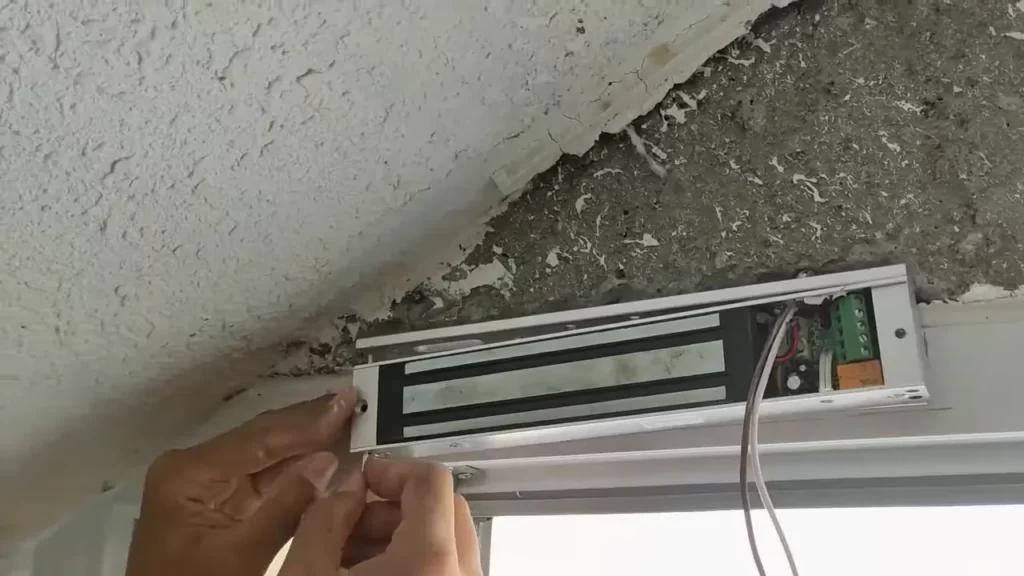
The buzzer and sound effects of a buzzer door lock contribute to its overall functionality and user experience. To test the buzzer and sound effects, follow these steps:
- Input a valid access code or use an authorized key to unlock the door.
- Listen carefully for the buzzer sound that confirms the successful unlocking of the door. The sound should be clear and audible, indicating that the lock has recognized the input and granted access.
- Try inputting an incorrect access code or using an unauthorized key to simulate an invalid access attempt. The lock should emit a different sound, such as a warning tone, to indicate that access has been denied.
- Test any additional sound effects that the buzzer door lock may have, such as low battery notifications or alarm sounds. Ensure that these sounds are distinct and easily distinguishable from the regular unlocking sound.
By thoroughly testing the buzzer and sound effects of the door lock, you can ensure that it effectively communicates important information to both authorized users and potential intruders.
Remember, testing the functionality of a buzzer door lock is crucial to ensure its proper operation and reliability. By checking the lock’s response to different inputs and evaluating the buzzer and sound effects, you can be confident in the security and convenience provided by your newly installed door lock.
Troubleshooting Common Installation Issues
Installing a buzzer door lock can greatly enhance the security of your premises. However, like any other electronic device, you may encounter some installation issues along the way. In this section, we will discuss and troubleshoot some commonly faced problems while installing a buzzer door lock. By following these troubleshooting steps, you can ensure a smooth and successful installation process.
Identifying and troubleshooting wiring problems
One of the most common issues you may encounter during the installation of a buzzer door lock is wiring problems. Incorrectly connected wires or damaged wiring can prevent the lock from functioning properly. Here are some steps to help you identify and troubleshoot wiring problems:
- Check the wiring connections to ensure they are securely attached and properly aligned.
- Inspect the wires for any signs of damage, such as fraying or exposed copper.
- If you find any damaged wires, replace them with new ones of the same gauge.
- Ensure that the wires are connected to the correct terminals on both the lock and the control panel.
- Use a multimeter to test the continuity of the wiring. A lack of continuity indicates a broken wire that needs to be replaced.
Fixing issues with the lock’s performance
If you have successfully installed the buzzer door lock but are experiencing performance issues, there are a few troubleshooting steps you can take to resolve these problems:
- Check the power supply to ensure it is providing the correct voltage to the lock. Low voltage can cause the lock to operate inconsistently or not at all.
- Clean the lock’s contact points and ensure they are free from dirt or debris, as this can interfere with the lock’s performance. Use a soft, dry cloth or a cotton swab to clean the contact points.
- Inspect the lock’s moving parts for any signs of obstruction or damage. Lubricate the moving parts with a recommended lubricant if necessary.
- Reset the lock to its default settings and reprogram it according to the manufacturer’s instructions. This can help resolve any software or programming issues that may be affecting the lock’s performance.
Resolving any connectivity or compatibility issues
Connectivity or compatibility issues can arise when installing a buzzer door lock, especially if you are integrating it with an existing access control system. Here are some troubleshooting steps to help you resolve these issues:
- Check that the lock is compatible with the access control system and that you have followed the manufacturer’s compatibility guidelines.
- Verify that all necessary connections are secure and properly made between the lock and the access control system.
- If you are using wireless connectivity, ensure that the lock and the access control system are within range of each other and that there are no obstructions interfering with the signal.
- Update the firmware or software of the lock and the access control system to the latest versions, if available. This can resolve any compatibility issues related to outdated software.
By following these troubleshooting steps for identifying and resolving common installation issues with a buzzer door lock, you can ensure a successful installation and enjoy the enhanced security it provides.
Enhancing The Security Of The Buzzer Door Lock
Installing a buzzer door lock is a great way to improve the security of your home or office. However, there are additional steps you can take to further enhance the security of your buzzer door lock system. By adding extra security features and implementing preventive measures, you can ensure that unauthorized access and tampering are kept at bay. In this article, we will explore some effective ways to enhance the security of your buzzer door lock.
<h3> Adding additional security features, such as access control systems or cameras </h3>
One of the most effective ways to enhance the security of your buzzer door lock is by integrating access control systems or cameras into your setup. These features provide an extra layer of protection by allowing you to monitor and control access to your property. With access control systems, you can limit entry to authorized individuals only, ensuring that only those with the proper credentials can gain access. Additionally, installing cameras can deter potential intruders and provide crucial evidence in the event of a security breach.
Incorporating an access control system into your buzzer door lock setup is relatively straightforward. It involves the installation of a card reader or biometric scanner, which will authenticate users’ credentials before granting entry. This added security measure ensures that only those with the necessary permissions can enter the premises.
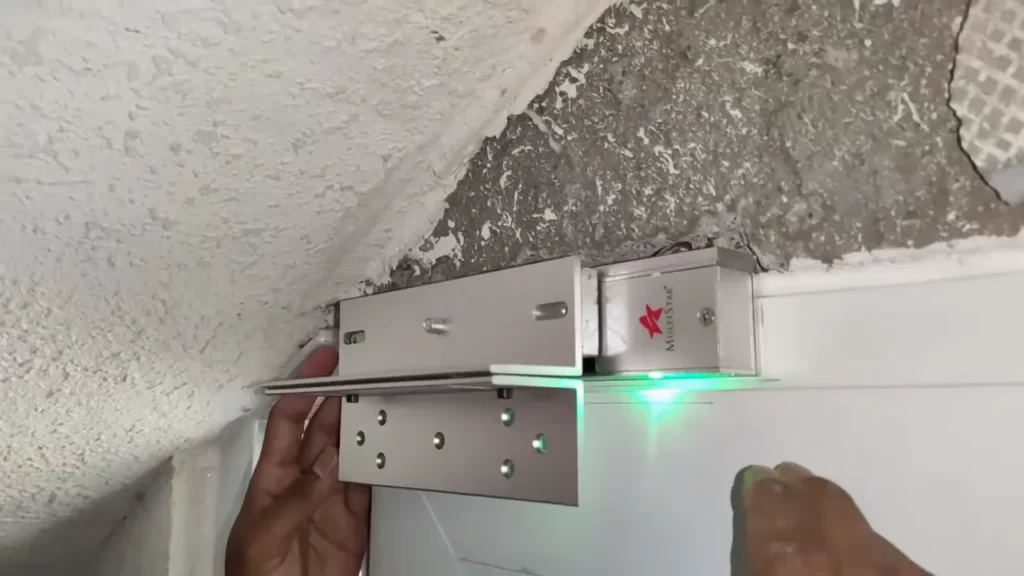
Similarly, installing security cameras in strategic locations can greatly enhance the overall security of your property. These cameras not only act as a deterrent but also provide you with real-time monitoring and recording capabilities. By placing them at entrances, exits, and other vulnerable areas, you can keep a close eye on any suspicious activities and gather evidence if needed.
<h3>Tips for preventing unauthorized access and tampering</h3>
Preventing unauthorized access and tampering is crucial to maintaining the security of your buzzer door lock system. Here are some essential tips to help you ensure the integrity of your security setup:
- Regularly change access codes or credentials: To prevent unauthorized access, it is important to change access codes and credentials periodically. By regularly updating these, you can minimize the risk of anyone gaining unauthorized entry through your buzzer door lock system.
- Implement multi-factor authentication: Adding an extra layer of authentication, such as a PIN code or a fingerprint scan, can significantly enhance the security of your buzzer door lock. This additional check before granting access helps prevent unauthorized individuals from entering your property.
- Monitor access logs: Most buzzer door lock systems maintain access logs, which provide a record of who entered and exited the property. Regularly reviewing these logs can help you identify any suspicious activity and take appropriate action if needed.
- Regular maintenance and inspection: Conducting regular maintenance and inspection of your buzzer door lock system is essential to ensure optimal performance. Periodic checks will help you identify any potential vulnerabilities or signs of tampering that may compromise the security of your setup.
By following these tips and incorporating additional security features, you can greatly enhance the overall security of your buzzer door lock system. Remember, a strong and well-maintained security setup not only provides peace of mind but also acts as a deterrent against potential intruders.
Regular Maintenance And Upkeep
Regular maintenance and upkeep of your buzzer door lock are essential to ensure its long-term functionality and reliability. By performing routine maintenance tasks, you can prevent potential issues, prolong the lifespan of your lock, and enjoy optimal performance.
Cleaning and lubricating the lock mechanism
Cleaning and lubricating the lock mechanism is an important task to include in your regular maintenance routine. Over time, dust, debris, and dirt can accumulate in the lock, causing it to become sticky or difficult to operate. By following these simple steps, you can keep your buzzer door lock in top-notch condition:
- Start by gently cleaning the lock with a soft, dry cloth to remove any surface dirt or grime.
- Next, use a small brush, such as a toothbrush, to carefully clean the grooves and crevices of the lock.
- After cleaning, apply a small amount of graphite or silicone lubricant to the lock mechanism. Be sure to follow the manufacturer’s instructions for the specific type of lubricant to use.
- Using a cloth, spread the lubricant evenly and ensure it reaches all moving parts of the lock.
- Finally, test the lock to ensure it operates smoothly. If you encounter any sticking or resistance, reapply lubricant and test again until the lock moves effortlessly.
Inspecting and replacing worn-out parts
Regularly inspecting and replacing worn-out parts is crucial for maintaining the security and functionality of your buzzer door lock. Over time, components such as batteries, wiring, or physical parts may wear down and require replacement. Here’s what you need to do:
- Check the condition of the batteries regularly and replace them as needed to ensure smooth operation.
- Inspect the wiring connections for signs of wear or damage. If you notice any frayed wires or loose connections, it is recommended to consult a professional to repair or replace them.
- Examine the physical parts of the lock, including the keypad, buttons, or fingerprint scanner, for any signs of wear or malfunctions. If necessary, contact the manufacturer or an authorized technician to replace the faulty parts.
- By conducting regular inspections and promptly replacing any worn-out parts, you can avoid potential lockouts or security vulnerabilities.
Updating firmware and software for optimal performance
To ensure your buzzer door lock operates at its best, updating the firmware and software is essential. Manufacturers often release updates and enhancements to improve the lock’s performance and address any potential security vulnerabilities. To update your buzzer door lock’s firmware and software, follow these steps:
- Visit the manufacturer’s website and navigate to the support or downloads section.
- Search for the latest firmware or software update specifically designed for your lock model.
- Download the update file to your computer and carefully follow the manufacturer’s instructions for the update process.
- Connect your buzzer door lock to your computer using the provided USB cable or follow the wireless connection method specified by the manufacturer.
- Select the downloaded update file and initiate the update process. Be patient and let the update complete without interruption.
- Once the update is finished, disconnect your lock from the computer and test it to ensure everything is functioning correctly.
By regularly updating the firmware and software of your buzzer door lock, you can take advantage of the latest enhancements, bug fixes, and security updates, ensuring optimal performance and peace of mind.
Frequently Asked Questions On How To Install A Buzzer Door Lock
How Much Does It Cost To Install A Buzzer Door Lock?
The cost of installing a buzzer door lock varies depending on factors like the brand, features, and complexity. Generally, you can expect to spend between $100 to $600, which includes the lock system and professional installation. Prices may vary based on location and additional customization options.
How Do You Buzz Someone Into Your Apartment From Your Phone?
To buzz someone into your apartment from your phone, use a connected intercom system or a mobile app. Simply select the person’s name from the app, press the corresponding button, and they will be granted access.
How Does A Door Buzzer Work?
A door buzzer works by using an electrical circuit that detects when someone presses the button. This triggers a doorbell sound or alarm, alerting the person inside. The circuit is comprised of a button, transformer, chime or alarm, and wires that connect them all together.
What Is A Door Buzzer Called?
A door buzzer is commonly called an intercom system. It allows communication between someone outside and someone inside a building.
Conclusion
Installing a buzzer door lock is a smart and convenient way to enhance the security of your premises. With the step-by-step guide provided in this blog post, you can easily install a buzzer door lock on your own. By following the instructions carefully and utilizing the right tools, you can ensure the safety of your property and peace of mind.
Don’t delay any longer, take the necessary steps today to protect your space.
